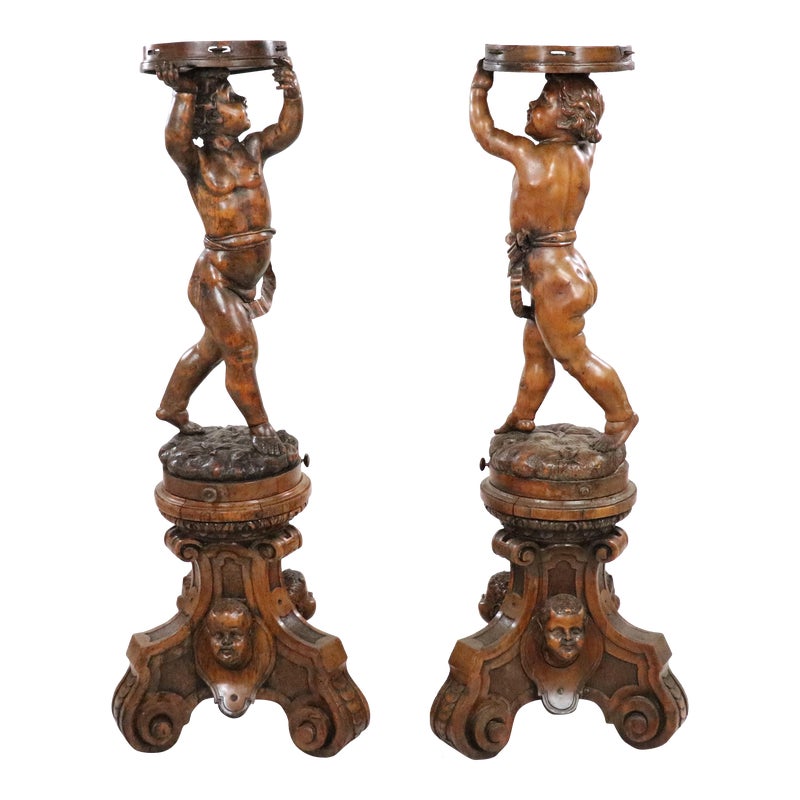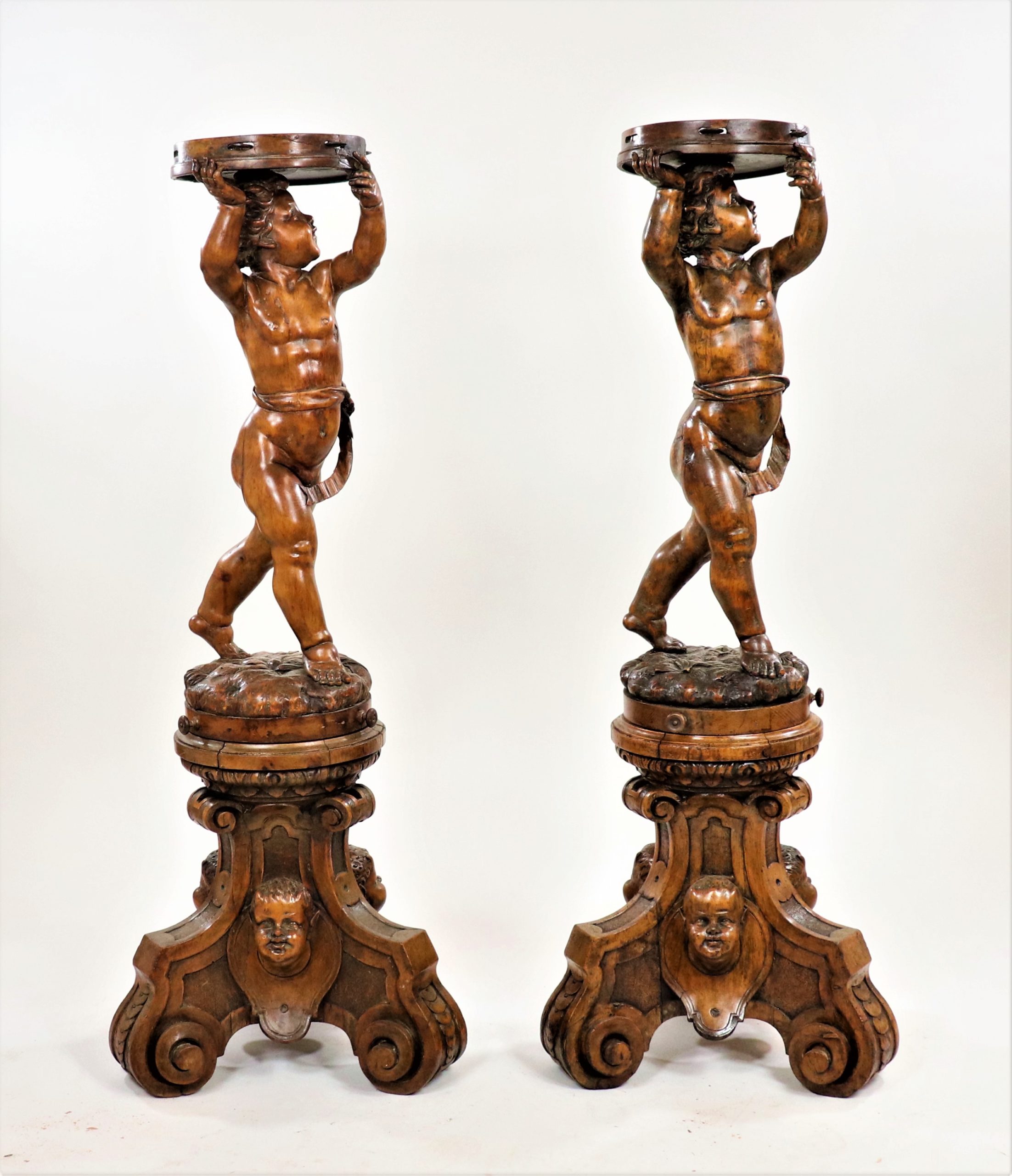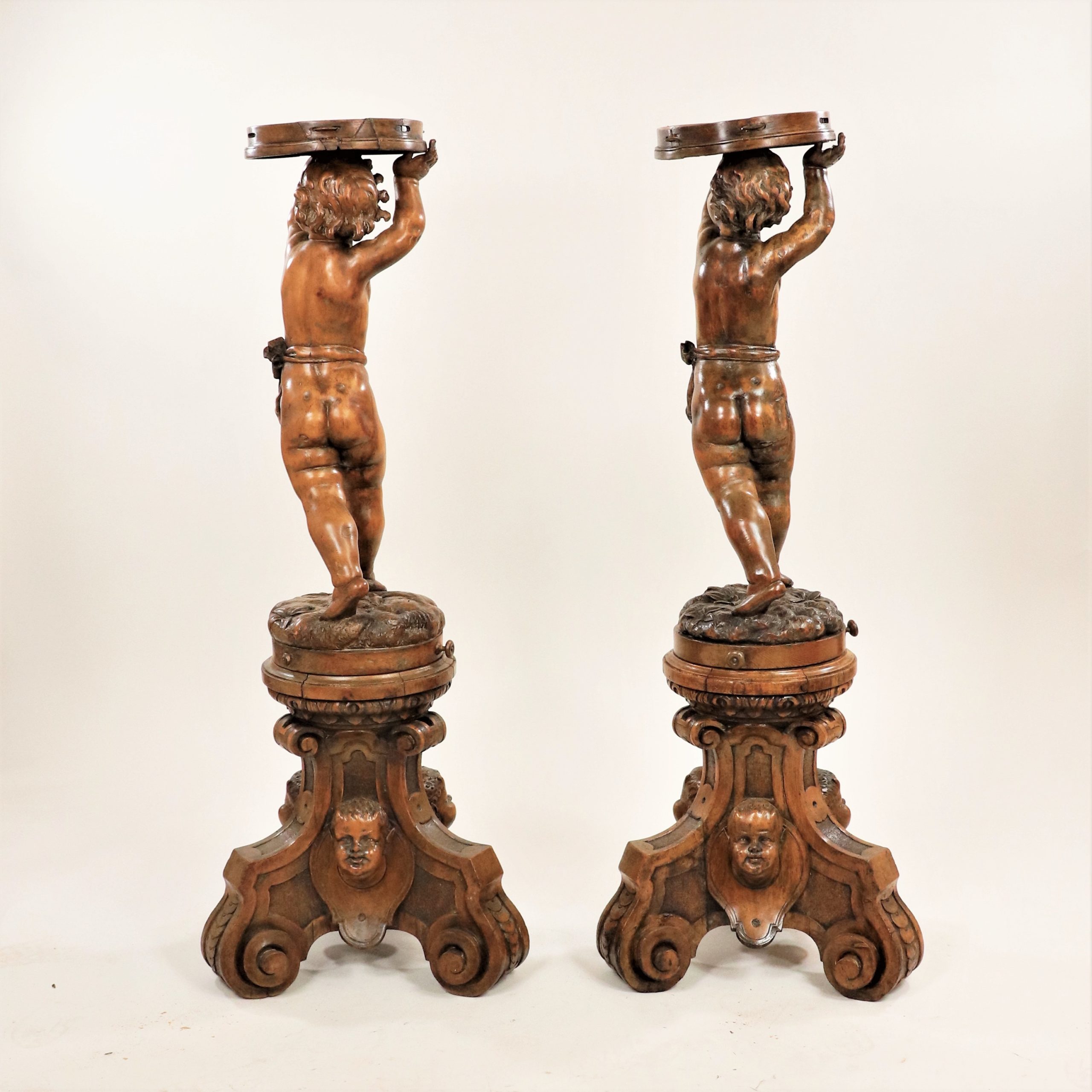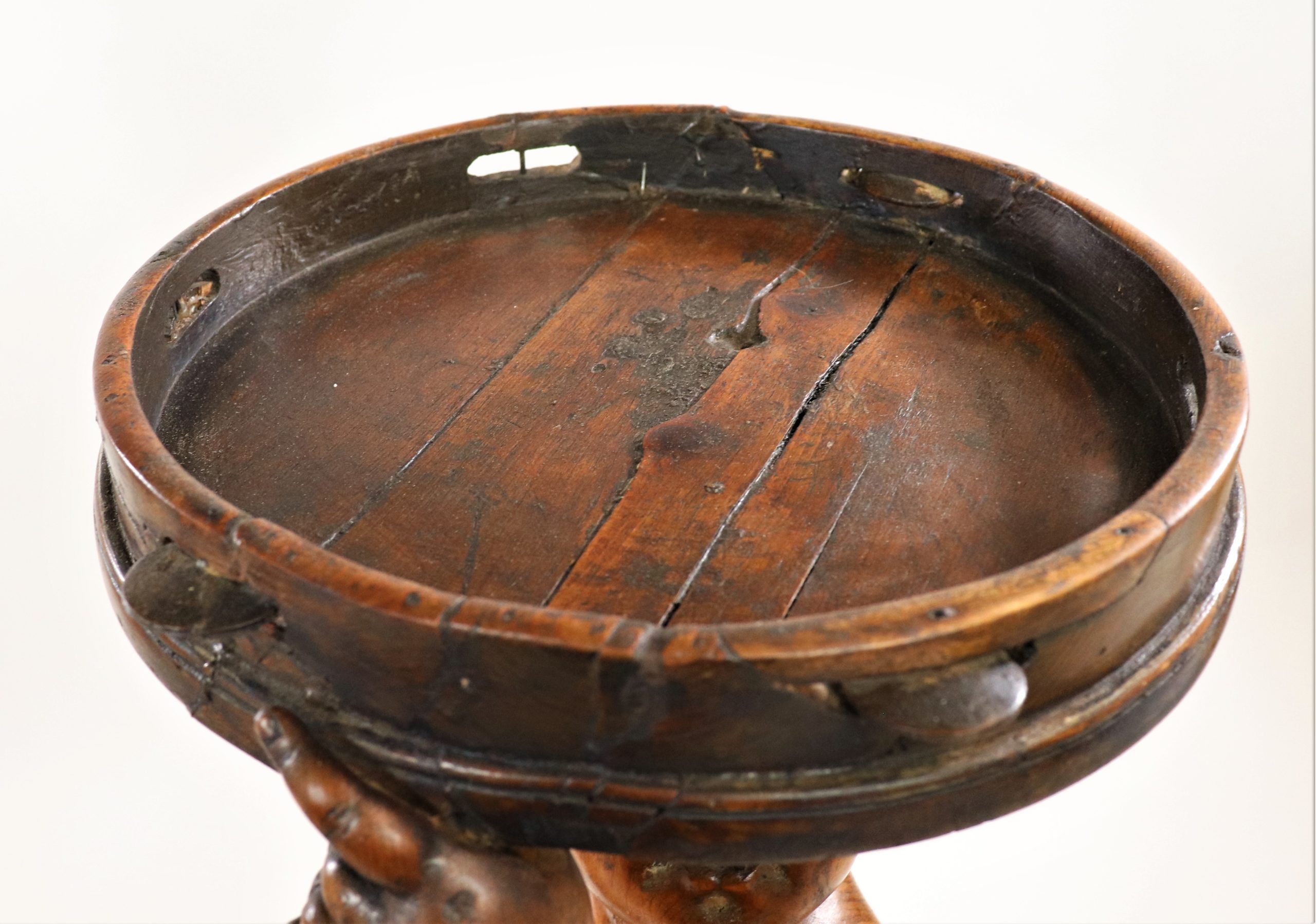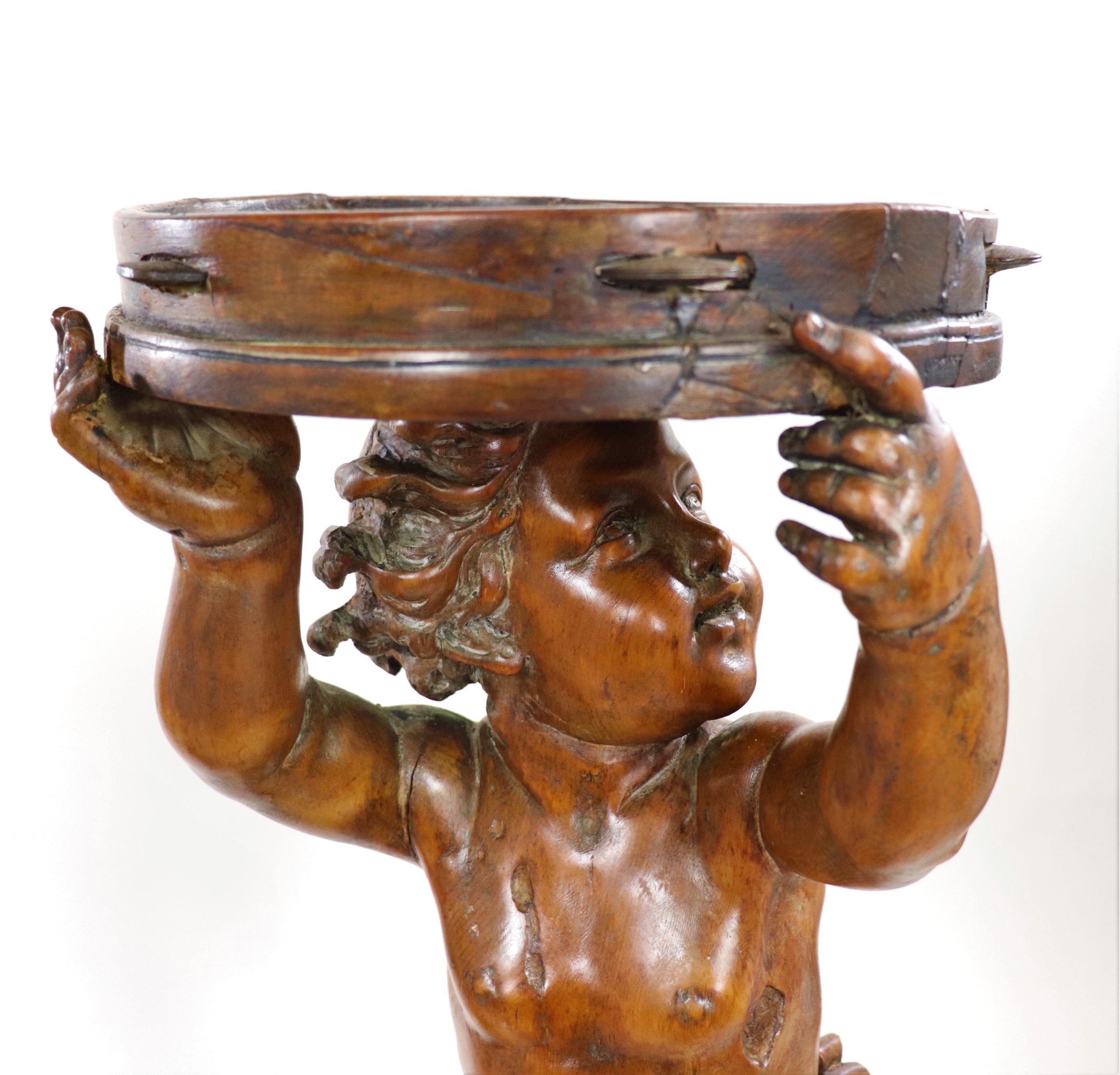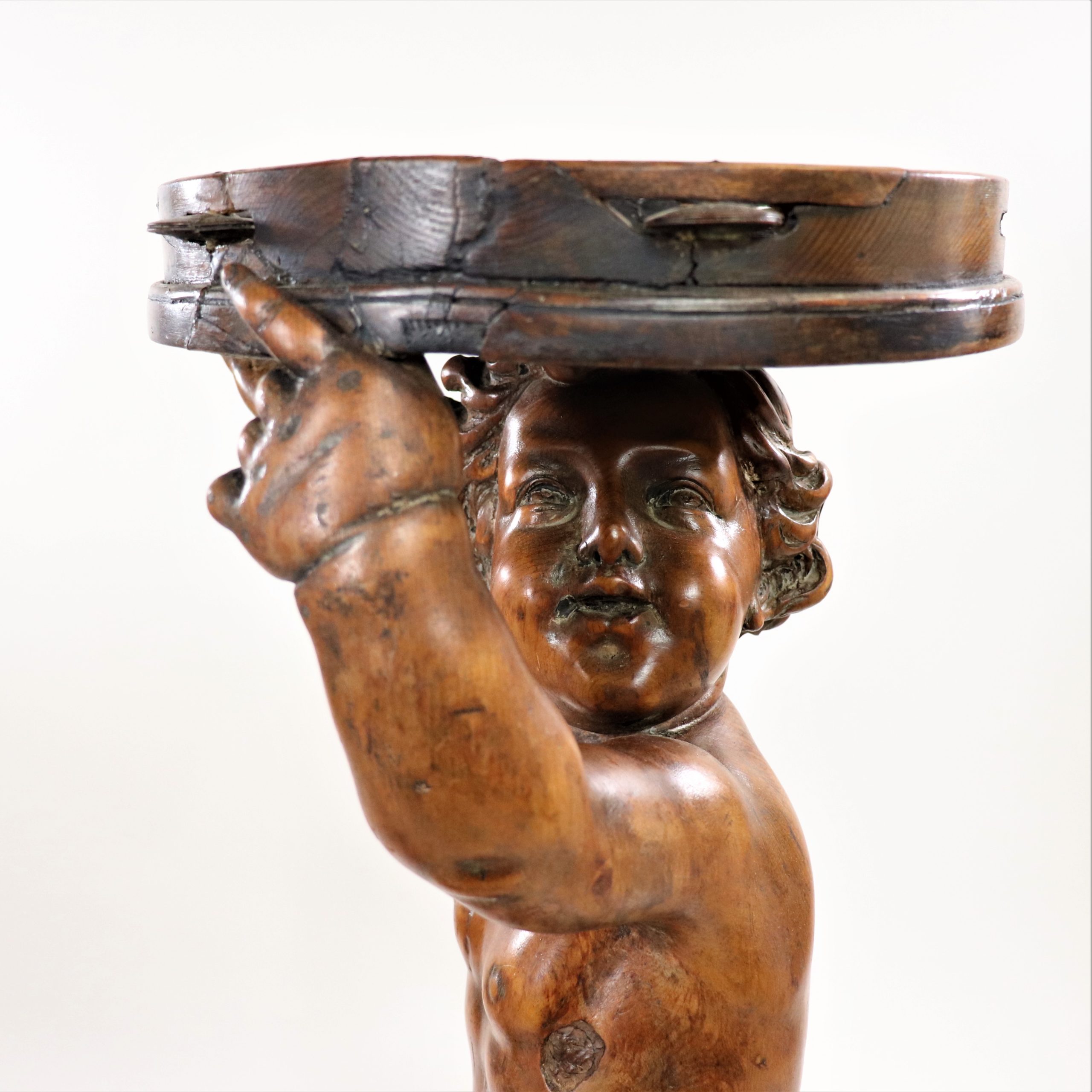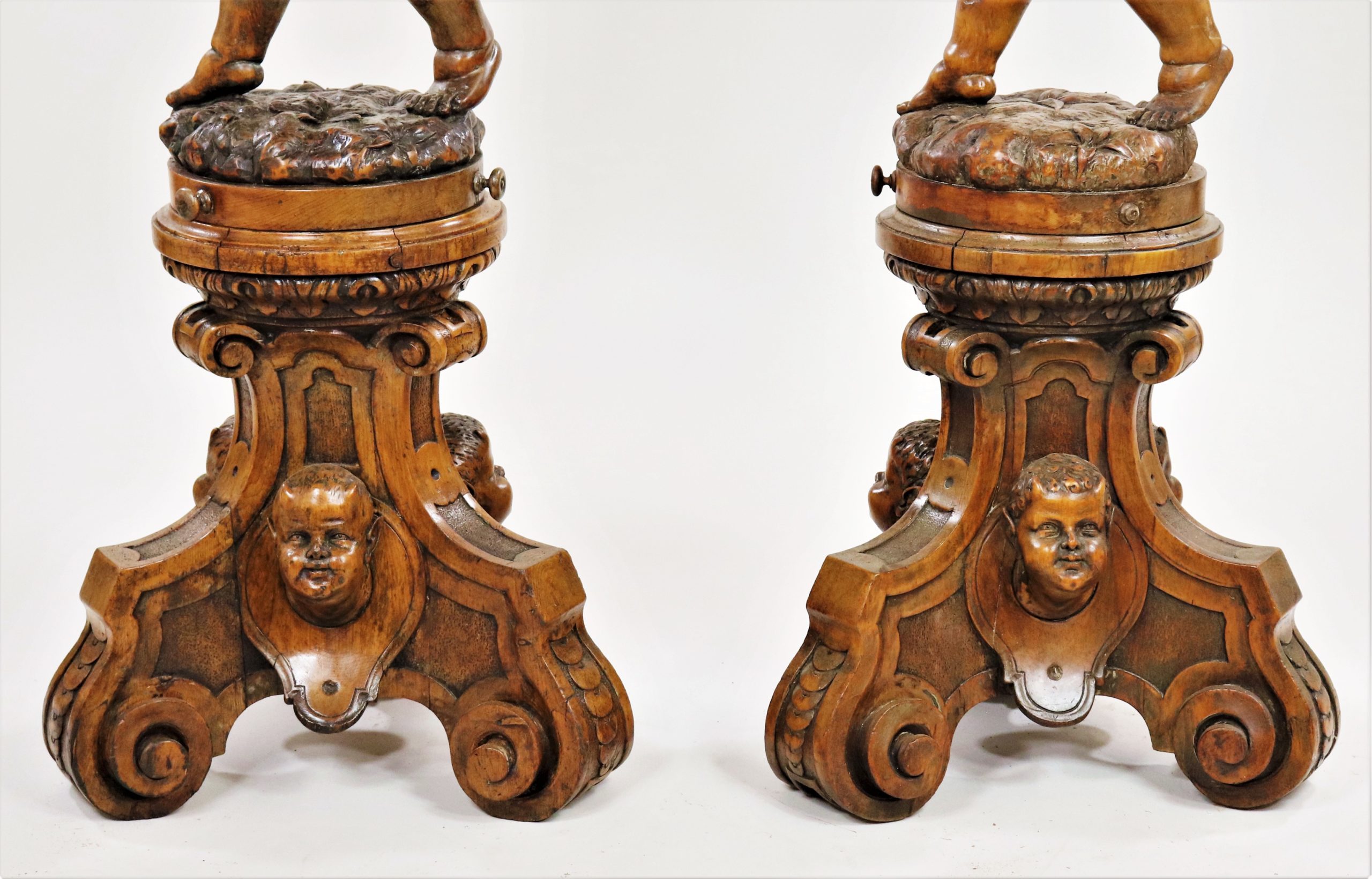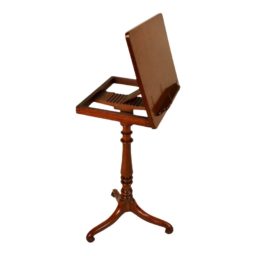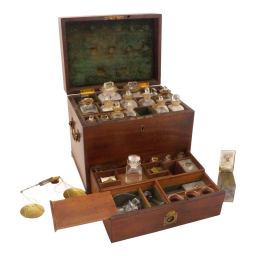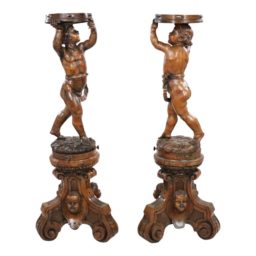Description
Meticulously carved from beechwood, this cherub pair recalls the iconic Renaissance style of the fifteenth and sixteenth centuries. Better recognized by their Italian name, putti—the singular putto refers to the Latin putus, meaning “boy” or “child”—these types of figures often recur in religious artwork as symbols of God’s omnipresence. Typically depicted as chubby male children and occasionally with wings, the putti motif initially disappeared from art during the Middle Ages. Historians generally attribute its later revival to Donatello, an Italian devoted to classical sculpture who lived in Florence in the 1420s. Under Donatello’s influence, putti became especially known as “musician angels,” and were often painted or carved with instruments. These 19th Century sculptures each hold a tambourine aloft their curled heads elegantly poised as if caught in a musical performance. A close eye will additionally appreciate the gentle curvature of the bodies, almost infantile in their apparent softness, including the dimples that delicately detail the knees and knuckles. Below the putti’s feet, the carving impressively transitions to a matching set of ornate pedestals. Here the artist achieves a notable functional elegance: the detailed scrollwork that so strikingly lifts the putti also forms a sturdily pronged base, conducive to secure placement on any level surface. At just over four feet in height, this Italian Renaissance pair could handsomely frame an entryway.
Each H= 52 in. W= 19 in. D= 19 in., 45 lbs.

